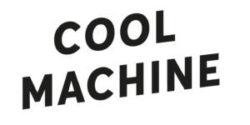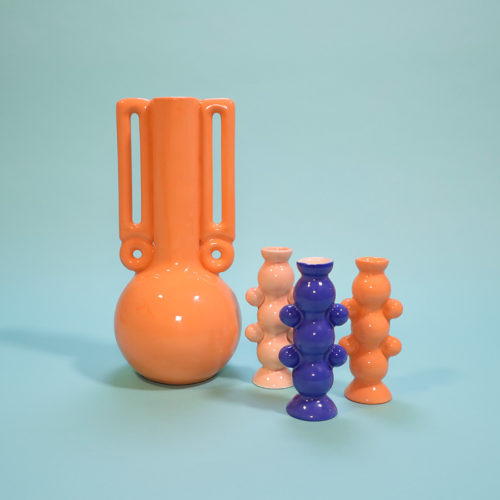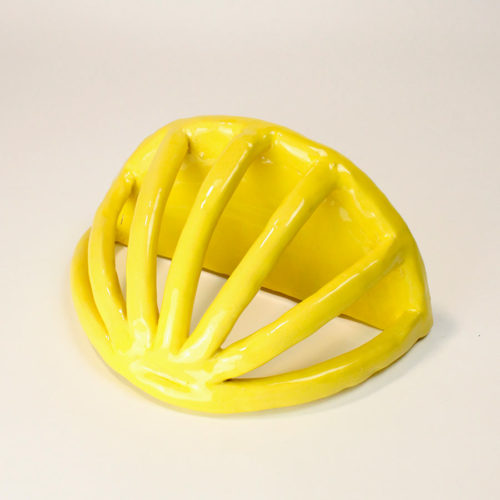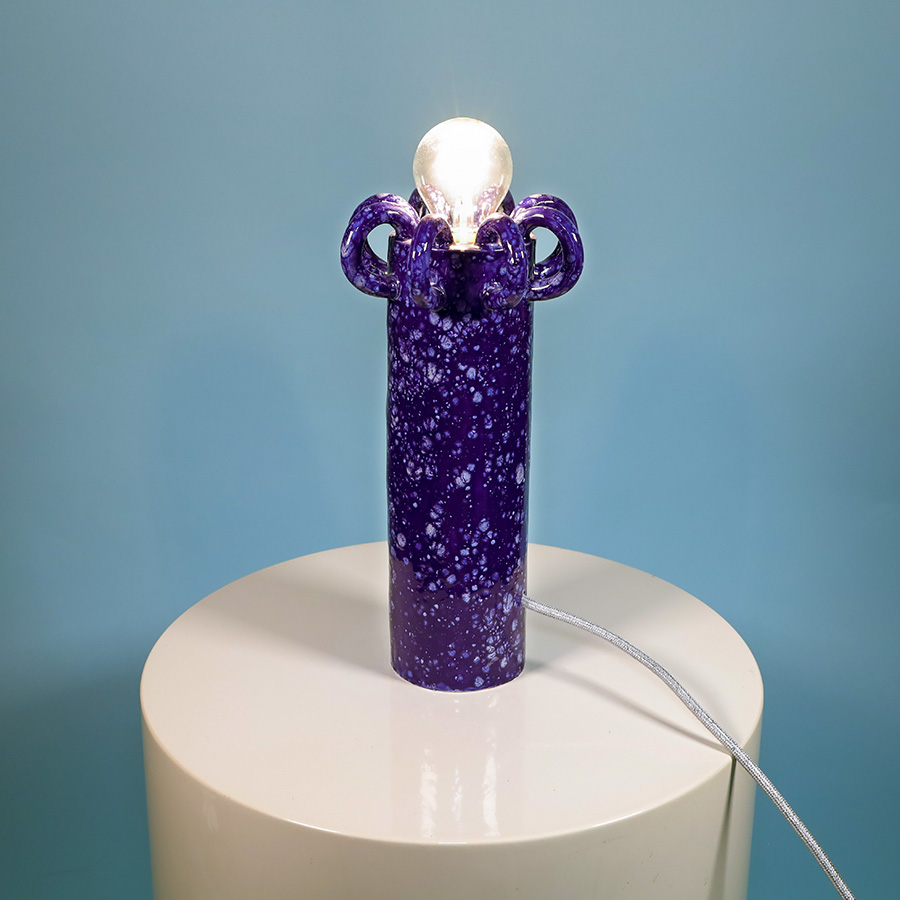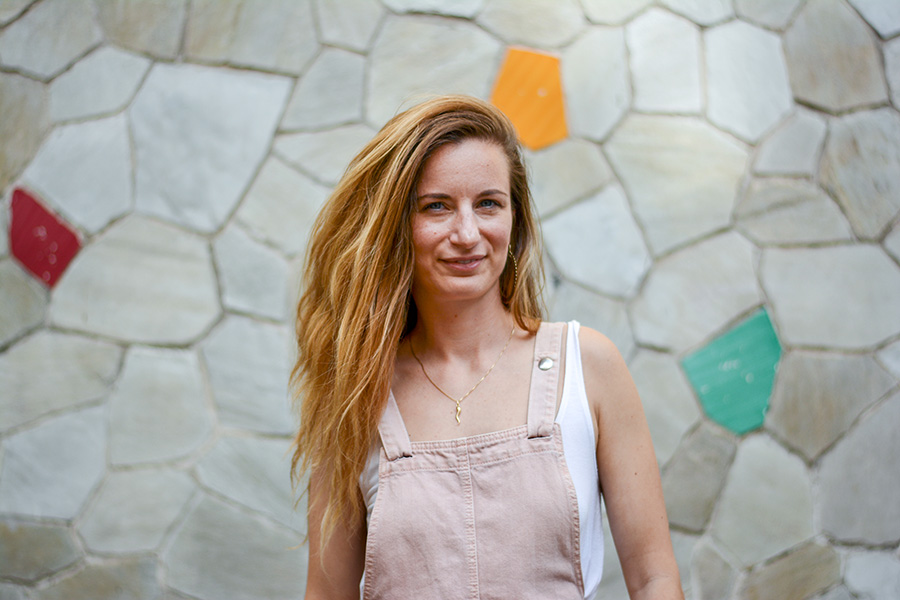
Ari de Luca, warm yourselves with these mediterranean colors
A rewarding journey
My name is Arianna and I am a designer. I have studied product design at university but then jumped into interior design as soon as I started working. Throughout my career, I’ve had the chance to get involved in very creative interior projects across Italy, South America and especially in the Uk, where I have lived for almost 10 years. Now that I have moved to back to Italy, where I run my own creative studio, I am mostly working with ceramics, so it feels like I am back to product design! I launched my very first ceramic collection in May 2020 and I am so excited to see where all of this is going !
“I see the products as different characters of the same story”

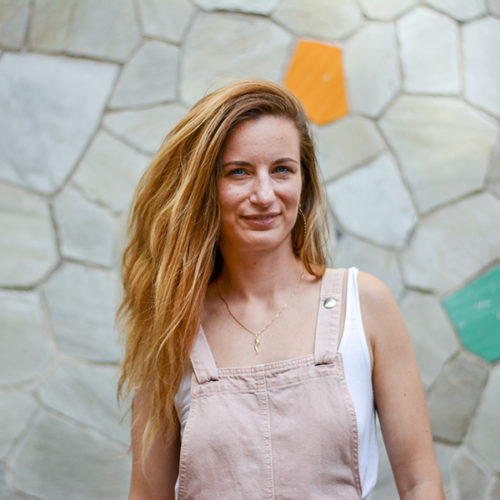
You have travelled a lot, why did you choose to settle in Rome ? How does it influence your work today ?
This is a very difficult question as I still feel like I could relocate again in a couple of years so, who knows!
To be honest, after having left London I was in South America and I was starting to miss Italy, so I came back here and realised that Rome had a quite fascinating roughness, it was chaotic but friendly and above all it was sunny. The main aim was to start with my own project, my own brand and creating my products, this worked out in Rome, so I decided to stay. The city is very rich in artisanal details, colours and inspiring glimpse. It is crazy to see how many different decorations, patterns and styles from different cultures and times in history can coexist in the same space. The city is also rich in unexpected workshops, artists labs and artisans of different generations. It is a city but it works more like a village, somehow. I don’t know if Rome influences my work in a direct manner, but its slow pace lifestyle is definitely helping me to develop my creativity and encouraging me to take time to experiment with new things.

What has been the most exciting project for you ?
So far I would say starting with my ceramic project was and it still is the biggest challenge. It is not just about designing and making the pieces but also taking care of everything that needs to be done around them in terms of presentation, promotion, shipping and so on. This is all new for me, very exciting of course, but still challenging. Sometimes it can be scary too. For example, thinking about the first time I shipped an item, I can remember how nervous I was, having no idea of where to start in order to pack it properly and ship it safely. Then it got better, mostly because I am starting to pay attention to more details so that I can slowly improve everything. There is still a lot to do and I have still a lot to learn but, step by step, everything will be possible.
You first worked as an interior designer, can you explain to our readers your creative process with ceramics ?
I approach ceramics exactly in the same way as I would approach an interior project. All of my projects start with a moodboard because I am very interested in communicating a specific mood, atmosphere and feel, . Each one of my creations is the product of a long and accurate visual research, based on all possibly related photographic projects, historical references, interesting details, colours and textures. After having gathered all this material, I play with it, re-shaping it and re-interpreting it so that I can tell a new story. I guess this is why I tend to think, design and produce collections rather than individual pieces – because I see the products as different characters of the same story.

“As I started to research more into my own aesthetics and into new ways to render my own moods, my ceramic production took a life on its own”
What led you to explore ceramics ?
Italy is full of ceramic villages, each one with its own school and tradition and, because I grew up in a place very close to one of those villages, the idea of experiment with ceramics has always been in the back of my mind. I left my hometown quite young but when I returned, I decided to start learning with local artisans as I felt I should learn it there, following their methods. Initially, I just used ceramics as a way to complement my interior projects, producing bespoke products and decorations that could enrich the spaces I designed with even more unique details. Later on, as I started to research more into my own aesthetics and into new ways to render my own moods, my ceramic production took a life on its own. Of course, this is just the beginning of my journey with ceramics and there is still a lot to explore and improve, but I am really enjoying the process.

Your creations at Cool Machine remind us of the traditional ceramics of Southern Italy (for example with the brush technic) as well as the Mediterranean and architecture.
Yes, I look a lot at traditional Italian ceramics. In particular, I love the Vietri ceramic heritage and its colours and themes appear within my production. I reckon that even the way I decorate my ceramics is based on traditional techniques, maybe because this is what I firstly learnt, but for sure I really enjoy the combination of traditional decorative techniques and contemporary designs.
Do you have any inspirations that guide you in your creation ?
In terms of references, for my work I also take inspiration from the Italian design language from the 1980s and, more than everything, from a huge photo archive of architectural details, texture and palettes that I have created capturing shots around Italy and the Mediterranean.
“I love the Vietri ceramic heritage and its colours and themes appear within my production”

Ari's favorite on Cool Machine
Very hard to pick as they are all so original and full of character. I think you have a great selection of artists and products and everything is so well curated. This makes me very happy and proud to be part of your gang! But if I really had to pick I would say my absolute favourites are Mickey Philips shelves and ABS objects vases.

